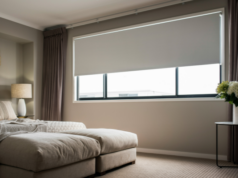
Installation requirements under the NCC
According to Part 8.2 of the NCC 2022 all windows and external glazed doors must be installed so that structural loads are not transferred to the window assembly. A minimum 10 mm gap is required between the top of the assembly and any loadbearing framing or masonry element to allow for settlement over time.
Windows must be fixed plumb square and stable to resist wind pressures and maintain weathertightness. Installation should ensure frame corners form right angles and diagonal measurements are equal to confirm squareness. Packing materials must be compatible with both frame and window assembly and fixed permanently in place.
Pre‑installation care and handling
Windows must be protected from damage before installation. This includes storing them in a dry clean location away from cement mortar or paint. Sashes should remain closed during framing. Avoid standing on the frames or using them as scaffolding support. Brick veneer installations should maintain a minimum 10 mm clearance between the sill and brickwork to accommodate settlement.
Correct flashing and drainage
Correct flashing installation is essential to prevent water ingress. Install sill jamb and head flashings according to substrate and wall type guidelines. Flashings must channel water outside and maintain continuity across junctions. Drainage holes (weep holes) must remain unobstructed. Incorrect or missing flashing is a common cause of leaks.
Fixing frames and ensuring support
Frames must be packed and fixed so they remain plumb and square without twist or distortion. The sill must be fully supported throughout installation to prevent sill roll, especially for sliding doors. Fixings must comply with wind rating requirements and avoid transferring load to the window frame.
Post‑installation care
After installation all surfaces should be cleaned of construction debris immediately. Acid residues must be rinsed before they dry. Window tracks and sills should be checked and cleared of sand or mortar. Avoid washing glass with acid. Protective labels and rating plates should remain intact for future reference AGWAbuild.com.auJason Windows.
Industry installation guidelines
The Australian Glass and Window Association AGWA provides a detailed industry standard guide to residential window and door installation. It includes handling storage inspection installation and maintenance instructions. The guide is updated regularly and works in conjunction with fixing guides relevant to new builds and renovations. Viewing AGWA’s installation video series is also recommended for practical demonstration across construction types like brick veneer block work and cladding.
Site‑specific hazards and performance windows
Window installation must consider site exposure conditions. In cyclone zones windows must be rated and installed per AS 2047 and AS 4055 wind and water ratings. Flashing and fixings must align with site wind pressure design loads. In bushfire prone zones installation must align with the relevant BAL rating and meet AS 3959 ember and flame resistance criteria.
Quick installation checklist
- Leave windows in their original protective packaging until installation begins
- Keep sashes closed during delivery and installation
- Maintain at least 10 mm clearance between window frame and loadbearing structure
- Pack frames so they remain plumb square and secure
- Provide full sill support to avoid sagging or roll
- Install correct flashing and maintain drainage continuity with clear weep holes
- Seal all gaps greater than 2 mm with compatible material
- Keep protective performance labels and certificates intact
- Clean glass and frames immediately after installation using manufacturer‑approved methods
- Ensure fixings meet wind load requirements for your site





